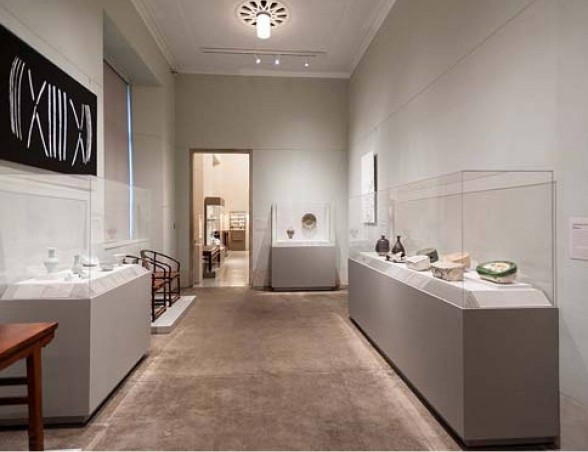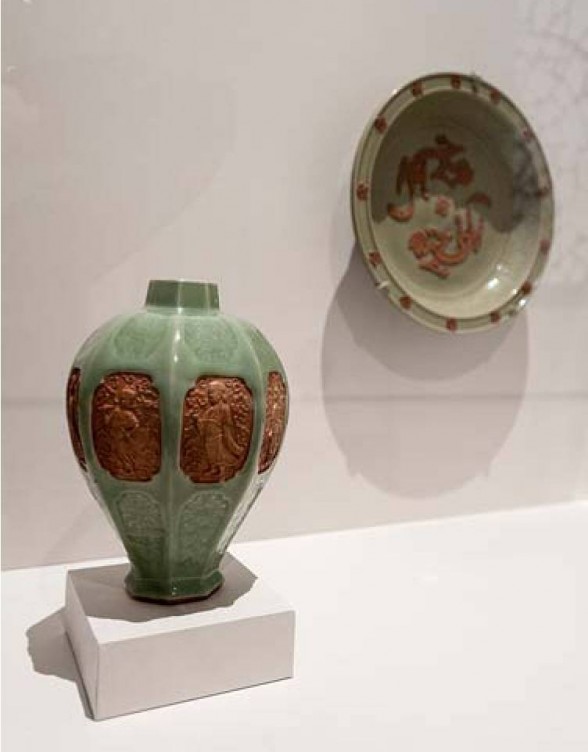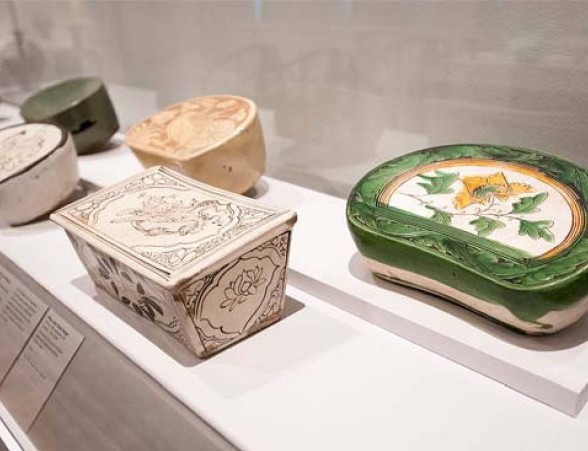[Andrea tours the PMA’s Chinese ceramics collection, enjoying the wares’ restraint and the museum’s attention to providing context. — the Artblog editors]
The recently installed gallery of Chinese ceramics at the Philadelphia Museum of Art (PMA), painted a soothing celadon green, is as subtle and elegant as its contents. Curator Hiromi Kinoshita showed me around and was justly proud of her new, long-term installation. The period covered in Forms of Elegance: Chinese Ceramics from the 9th to the 14th Centuries–the Song and Yuan dynasties–was not only considered the pinnacle of ceramic production by subsequent generations in China, but was the basis of a Japanese tradition which, in turn, influenced British and American studio pottery in the 20th century. This is my own favorite period; I admit to having a Japanese taste in Chinese ceramics, and have a particular interest in black wares, with glaze effects reflected in their names: “oil spot,” “hare’s fur,” “partridge feather”.
Minimalist, but hardly utilitarian

The gallery includes a range of elegantly-shaped bowls, vases, ewers, covered boxes, and other useful pieces. These are not tomb contents, as are most surviving ceramics from earlier periods, but items of everyday use, even if intended for a rarefied group of collectors: the 1% of their day. Some of the forms are left to speak on their own, while others are decorated with a variety of techniques including painted glazes, incising, figured designs impressed from molds–a quicker and cheaper method that produced effects similar to incising–and wax resist used to preserve un-glazed insets, which contrast with the glazed forms. A significant portion of the work consists of varying shades of green-glazed ware, termed “celadon” in the West, whereas in China the pieces would be categorized only by the site of their production. The installation also includes black ware, white ware, and the occasional piece in another color–although this was a period that produced restrained, largely monochrome ceramics. Despite the anachronism, they might be described as “minimalist”.

Wall texts provide a multidimensional background for the collection without distracting from the objects themselves. They discuss the influences of decorative arts in other materials, such as silver, jade, and lacquer ware, some of which are included in the cases; the importance of imperial taste; the influence of tea culture, which favored dark colors as a contrast to the white, whipped tea that was served; and how the export of ceramics, which began in the seventh century, influenced production and reflected the tastes of markets in the Middle East, Africa, Korea, Japan, and Southeast Asia.
A place to spend some quiet time

An unusual aspect of the installation is the inclusion of four large, black-and-white photographs by Eric Zetterquist. While they initially appear to be abstract, they are actually products of Zetterquist’s close study of the ceramics in the gallery and a piece of Chinese furniture on which some of them sit: blown-up details of their forms, surfaces, and even the space between two pieces. The photographs suggest that viewers willing to give equal attention to these classic Chinese ceramics will find their own rewards.
Note: the series of galleries adjacent to this one contains a survey of earlier Chinese ceramics that date as far back as the Neolithic.









